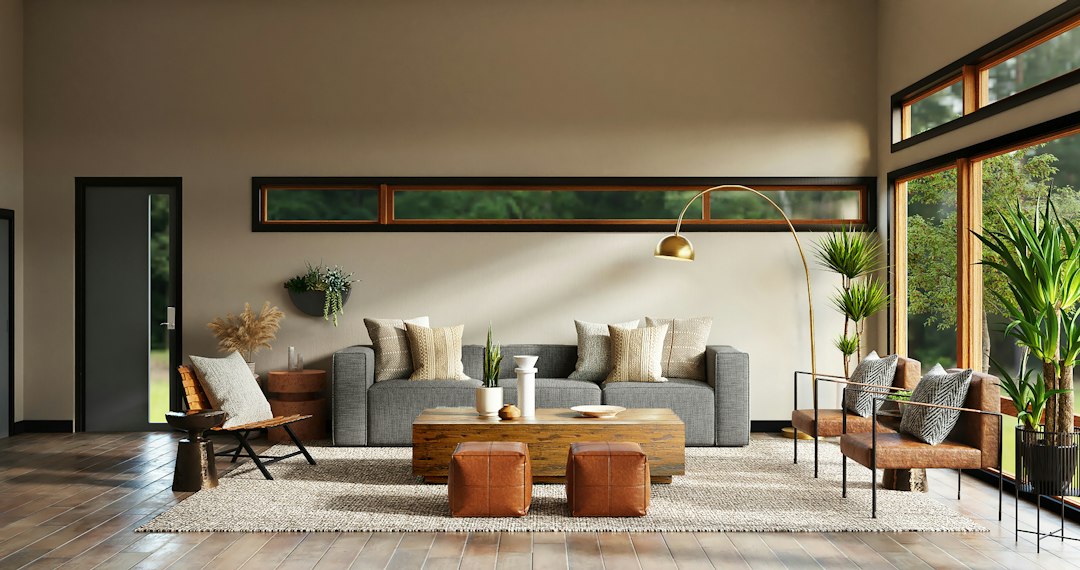When it comes to decorating your home, one of the most important aspects to consider is the color palette. The colors you choose can greatly affect the overall look and feel of your space. They can impact your mood, create a sense of harmony, and even make a room appear larger or smaller. With so many options to choose from, finding the perfect color palette can be a daunting task. But fear not! In this article, we will guide you through the process of selecting the ideal colors for your home.
Understanding the Basics of Color Theory
Before diving into the world of color palettes, it's essential to understand the basics of color theory. Color theory provides a framework for understanding how colors interact with each other and how they can be used effectively in design.
There are three primary colors: red, blue, and yellow. These colors cannot be created by mixing any other colors together. Secondary colors are created by mixing two primary colors. For example, mixing yellow and blue creates green. Tertiary colors are created by mixing a primary color with a secondary color.
Colors can also be classified as warm or cool. Warm colors, such as red, orange, and yellow, create a sense of energy and warmth. Cool colors, like blue, green, and purple, evoke feelings of calmness and tranquility. Understanding the emotional impact of colors is important when selecting a color palette for your home.
Consider the Mood You Want to Create
Before choosing colors for your home, think about the mood you want to create in each room. Different colors can evoke different emotions and set the tone for a space. For example, if you want to create a tranquil and relaxing atmosphere in your bedroom, consider using cool and soothing colors such as blues and greens. If you're looking to create an energetic and vibrant living room, opt for warmer tones like oranges and yellows.
The Importance of Natural Light
When selecting colors for your home, it's crucial to take into account the natural light in each room. Natural light can greatly impact how colors appear. Rooms with plenty of natural light can handle darker and more saturated colors, while rooms with less natural light may benefit from lighter and cooler colors to create a brighter and more open feel.
Creating a Harmonious Flow
Creating a harmonious flow throughout your home is essential for a balanced and cohesive design. This can be achieved by using a consistent color palette throughout different rooms. Choose a dominant color that will be the primary color used in most areas. Then, select secondary and accent colors that complement the dominant color. This will create a sense of harmony and unity as you move from one room to another.
The Power of Neutrals
Neutrals are an essential component of any color palette. They provide a solid foundation and can help balance out bolder or more vibrant colors. Incorporating neutral colors, such as whites, creams, grays, or beiges, can create a timeless and elegant look in your home. Neutrals also allow for more flexibility in changing your decor over time as they pair well with almost any other color.
Creating Contrast
Creating contrast in your color palette can add visual interest and depth to your home. Contrast can be achieved by incorporating colors that are opposite each other on the color wheel, such as pairing cool blues with warm oranges or deep purples with vibrant yellows. This juxtaposition of colors creates a dynamic and eye-catching effect.
Using the 60-30-10 Rule
A commonly used rule in interior design is the 60-30-10 rule. This rule suggests that your color palette should consist of 60% dominant color, 30% secondary color, and 10% accent color. This distribution helps maintain balance and visual appeal. For example, if you have a predominantly blue color palette, you can use shades of blue for 60% of the space, a complementary color like orange for 30%, and a pop of a vibrant color like yellow for the remaining 10%.
Getting Inspired: Using Color Resources
If you're feeling overwhelmed and unsure where to start, there are many color resources available to help you find inspiration. Online platforms like Pinterest and color palette websites provide a myriad of ideas and combinations. You can also take inspiration from nature, artwork, or even fashion trends.
Testing Colors: Samples and Swatches
When choosing colors for your home, it's essential to test them before committing. Lighting conditions and surrounding colors can significantly impact how a color appears in your space. Purchase small paint samples or obtain color swatches from a local home improvement store. Paint test patches on your walls and observe them at different times of the day to ensure they align with your vision.
Consider Your Furnishings and Decor
When selecting a color palette for your home, it's crucial to consider your existing furnishings and decor. The colors you choose should complement and enhance your furniture, artwork, and accessories. Look for colors that harmonize with the undertones of the materials used in your space. For example, if you have warm-toned wooden furniture, consider pairing it with warm colors like earthy browns and rich reds.
Don't Forget the Small Details
While selecting the right wall colors is essential, don't neglect the small details that can make a big impact. Consider the colors of your trim, moldings, doors, and cabinetry. These elements play a significant role in the overall look and feel of your space. Make sure these details harmonize with your chosen color palette to create a cohesive and unified design.
Conclusion: Your Perfect Palette Awaits!
Choosing the perfect color palette for your home is an exciting and creative process. By understanding the basics of color theory, considering the mood you want to create, and taking into account factors like natural light and contrast, you can design a harmonious and visually stunning space. Remember to test colors before committing and consider the existing furnishings and small details in your home. With a well-thought-out color palette, you can transform your house into a harmonious haven that reflects your unique style and creates a welcoming atmosphere for all who enter.

